Legal and Compliance training cannot possibly work effectively!
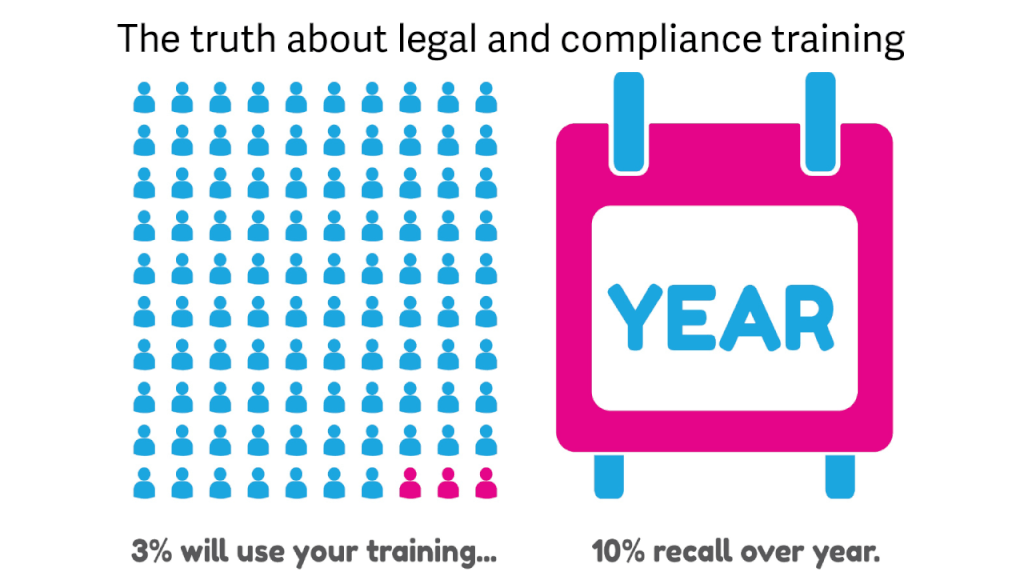
Untold Compliance
Before we start:
In this article, I share why it is that only 3 to 5% of your workforce use your legal and compliance training and retain it for only 10% of the time. And what you can do about it!
But before you read about that, find out about me.
About me: As a compliance professional, lawyer (qualified in the UK and Australia) and self-confessed ‘creative’, I will be sharing my observations and experience over the past 25 years working as an in-house legal counsel, head of risk and compliance, an external compliance consultant and trainer and Principal of my own law firm.
What I’ve done: Having worked with organisations including Aon, Airbus, Aristocrat, Deliveroo, LinkedIn, Microsoft, Oxfam, Rabobank, ResMed, Rio Tinto, Rolls Royce, The Uniting Church of Australia, Westpac, Wesfarmers and many more, I have seen the different strategies, structures and ways that legal and compliance teams operate.
I have also had the privilege of not just providing legal advice and risk and compliance services but also developing legal and compliance communication, training and marketing programs. I will be focusing on the importance of these three aspects as part of any successful legal or compliance program.
How I write: In each article I will be using the Untold Compliance Frame Training Method™ methodology of the Pre-frame and Post frame. I use this in all of my training and communications and talk about it in my complimentary course (details at the end of this article) and my upcoming book Told: How in-house legal and compliance professionals secure airtime, gain traction and transform organisations.
- The Preframe sets the stage and influences how people perceive and remember information, acting like a movie trailer to spark curiosity.
- The Post frame reinforces key takeaways and action items, aiding retention.
What you will learn in this article:
- The Forgetting Curve
-
Compliance User Pyramid
- Creating an Effective Learning Environment
- The Frame Training Method™
- Key Takeaways for Effective Training
The Forgetting Curve
German psychologist Hermann Ebbinghaus did several experiments to demonstrate that memories weaken overtime and that there is a significant drop in retention shortly after learning something if we do not do something to reinforce the learning. This research resulted in the Ebbinghaus Forgetting Curve.
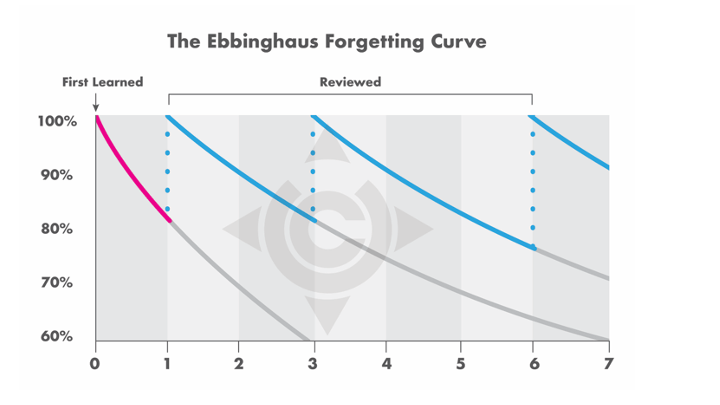
Untold Compliance Ebbinghaus Forgetting Curve
You will see that we forget most of what we learn within just 3 days unless we review it frequently. If we apply this statistic to annual training, people will recall the training for around 10% of the year.
The Compliance User Pyramid
In this section, I have referred to compliance but feel free to swap it out to legal as the same concepts apply.
Typically, and in my experience across approx 20 companies in 20 different industries, the people who attend or complete training generally fall into 4 different camps:
1. Immediate users
2. Future users
An organisation will have a percentage of the employee population who apply the training they receive. These are active users who require a particular control as part of their role. For example, employees who need to engage a third party or put in place a particular agreement. These are the people for whom the training is effective.
A program will also have users in two other categories:
3. Aware but not sure when they will need to use what they have learned.
4. Non aware and non-users
For illustrative purposes the diagram below shows a typical breakdown of the four types of users.
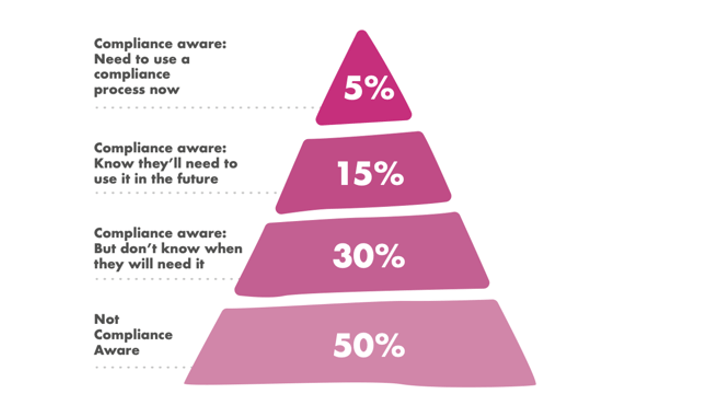
Untold Compliance compliance user pyramid
As you can see, in this example, the vast population (80%) of users are either compliance unaware or do not know when to use the controls.
Whilst this figure is only an estimate, it is still worth considering how we increase the uptake of these users so that we turn the population of users to immediate compliance users and future compliance users.
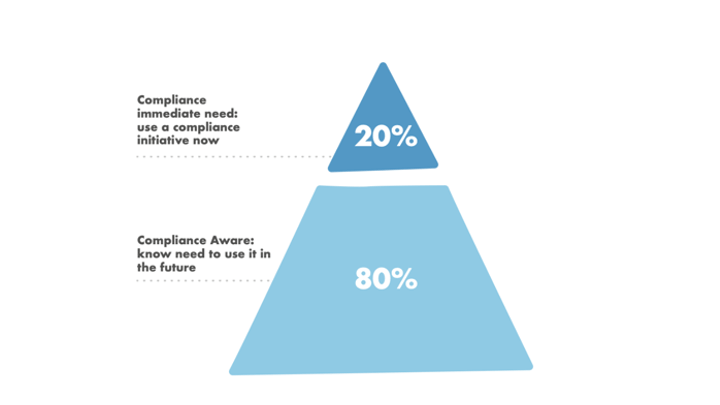
Untold Compliance compliance user pyramid
The science behind creating an effective learning environment.

“As you can see, it does not matter how good the training looks that matters. What matters is how good it is at getting people to actually use what they have learned.” Nicole Rose (personal quote)
How good it is at actually getting people to retain information and use it in the future? At getting people to turn from unaware or don’t know how to use it, to aware and know they need to use it at some point in the future?
How do we make ourselves stand out and be remembered?
The truth is that we need to start with our brains. How people learn. Here’s a quick 101 on the brain.
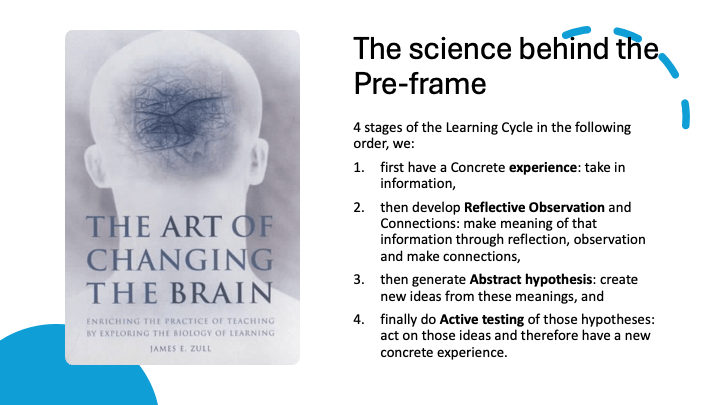
James Zull, behavioural scientist, professor of biology and author explains, in his book The Art of Changing the Brain: Enriching Teaching by Exploring the Biology, explains that there are 4 stages of the Learning Cycle in the following order, we:
- Gather: first have a Concrete experience: take in information.
- Reflect on what we know: then develop Reflective Observation and Connections: make meaning of that information through reflection, observation and make connections.
- Create meaning: then we generate abstract hypothesis: create new ideas from these meanings.
- We do something with it: we need to do Active testing and act on those ideas. This enables us to have a new concrete experience.
And in this process, it is stage 2 of the process – reflective observation – that is the most important for us to start with.
Before we can ask our employees to take in new information and do something with it, we need to get them to connect this information with what they already know. You want to start any training or information sharing with your learners/recipients already having neurons firing in their brain allowing them to make connections as soon as new information comes in.
In other words, you want to ensure that they have already got something to connect with before they start their learning journey. It’s rather like going to a country you have not been to before but having a friend you can visit. That friend can connect you to new people and places in a city you do not know. The ability to relate new information to what we already know is our friend and our companion on our learning journey.
How do we do this?
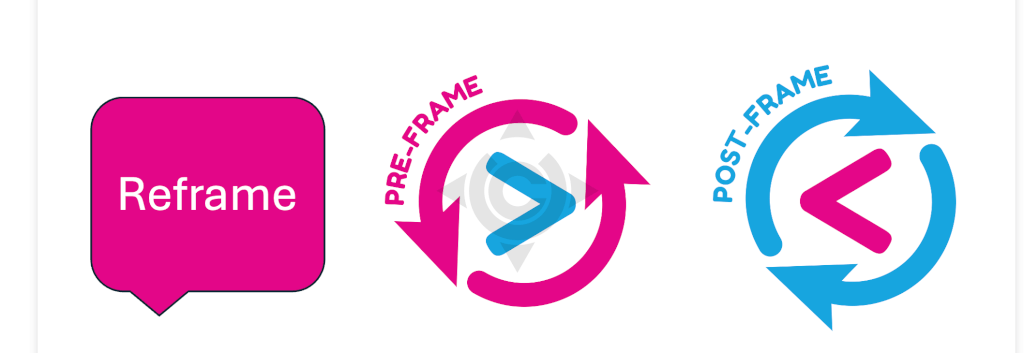
Untold Compliance
We need to:
1. Understand our audience, name what challenges the may be facing internally about the information and reframe how they think.
2. Preframe your audience before you start the training process. Ideally this happens at least 24 hours before the training session, but as I shared with one of the participants in my Frame Training Method™ session today, you can also do this immediately before you start the training so long as you use the words “Before we begin..”. The most important this we need to do with our learners is to give them snippets of vital information so they already have a memory to reflect on before you start sharing fully. In essence, the preframe is how we share before we share it fully. It can influence the way people think about a topic, issue, or situation and help them to recall the information they are learning, particularly when it is new. It’s more than an explanation or introduction. Think of it like a movie trailer. It’s designed to invigorate, inspire, and instil a sense of ‘must have’ or curiosity in the recipient.
3. To help retain the information (past the Ebbinghaus Curve of 3 days) we then need to post frame our audience. The post frame is how we help people to remember and embed the information they have learnt.
The Post-frame: Use this information practically
Key takeaway one: Effective training is training that people use.
As I shared, it does not matter how good the training looks that matters. What matters is how good it is at getting people to actually use what they have learned.”
So concentrate on producing training:
- that people can reflect on;
- people can create new meanings with what they already know and what you are teaching them;
- people can then go away and as quickly as possible do something with.
Key takeaway two: Think about your audience using the Compliance User Pyramid
What does your legal or compliance audience look like? Consider what types of your population will be categories 3 and 4 and see if you can convert them. Below is this depicted as a pie chart.
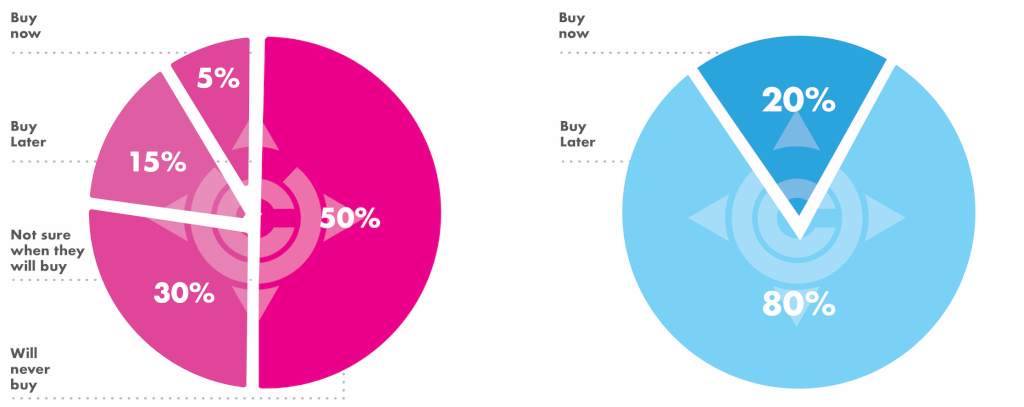
Key takeaway three: Learn the art of the Reframe, Preframe, and Post-frame
Attend my complimentary Frame Training Method workshop. It is on weekly each Tuesday or Wednesday (depending on where you live). Register below to get details of weekly sessions. CPD points will be awarded.
Over to you
- Have a chat: https://calendly.com/nicoleroseuntoldcompliance/30-min-coffee-chat book in for a complimentary 30 minute chat to talk about anything that you want to improve in your legal or compliance program. I guarantee you will walk away with at least one great insight.

